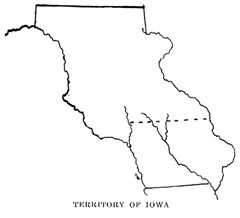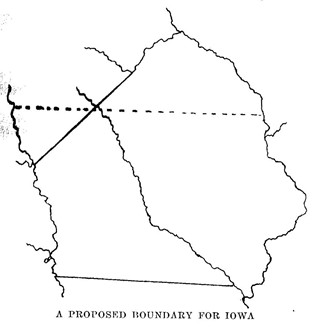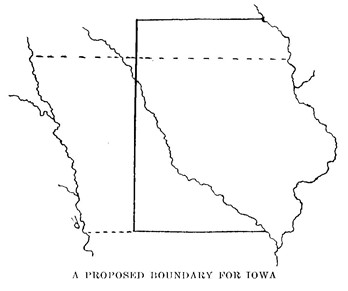Since the people would have neither of these arrangements, a new convention was called in 1846. In this convention, which consisted of thirty-two members, the present boundaries were fixed; and they were approved by Congress. The voters were again called upon to accept or reject a constitution and there were only about 450 more votes for it than were against it; so one may conclude that all were not yet very anxious for a state government. Perhaps everybody was satisfied, however, when on December 28, 1846, Iowa was admitted as one of the United States. When Congress has passed an act admitting a territory as a state, the territory has forever given up its privilege to say whether or not it will be a state; it has agreed to stay by the Union. To be sure the state makes its own laws, as mentioned in the first chapter of this book; but at the same time it must obey the constitution and the laws of the United States.
From July 4, 1838, to December 28,1846, it is seen, Iowa had been an independent territory; and during that time there had been three governors. These were Robert Lucas, appointed in 1838; John Chambers, appointed in 1841; and James Clarke, appointed in 1845. All of them, of course, were appointed by the President of the United States as all governors of territories are. When the election came on in the State, all the officers had to be elected, and Mr. Ansel Briggs was chosen as the first Governor in October, 1846. Along with him there were elected a Secretary of State, an Auditor of State, a Treasurer of State, and a superintendent of Public Instruction.
It will be understood that there were not nearly so many officers to elect at that time as in these days. But there were the same parts to the State government; that is the legislature or the General Assembly, makes all the laws; the Governor and the other officers who help him to enforce the laws; and the courts of the State and of the counties, which see that the law is correctly understood. Perhaps it would be better to say that the courts interpret, or explain the laws.
In the days of the Territory of Iowa the two houses in the law-making part of the government were called the Council and the House of Representatives. They met once a year. The council, or the highest body of the legislature, was changed in the constitution to the Senate; and the General Assembly or legislature met once in every two years. The First General Assembly came together at Iowa City, the capital, on November 30, 1846, which, as may be seen, was almost a month before Iowa was admitted as one of the United States. Before a new constitution was adopted (in 1857) the General Assembly held six regular and two extra sessions. The governor may call the members of the two houses together when business of importance demands an extra session.






